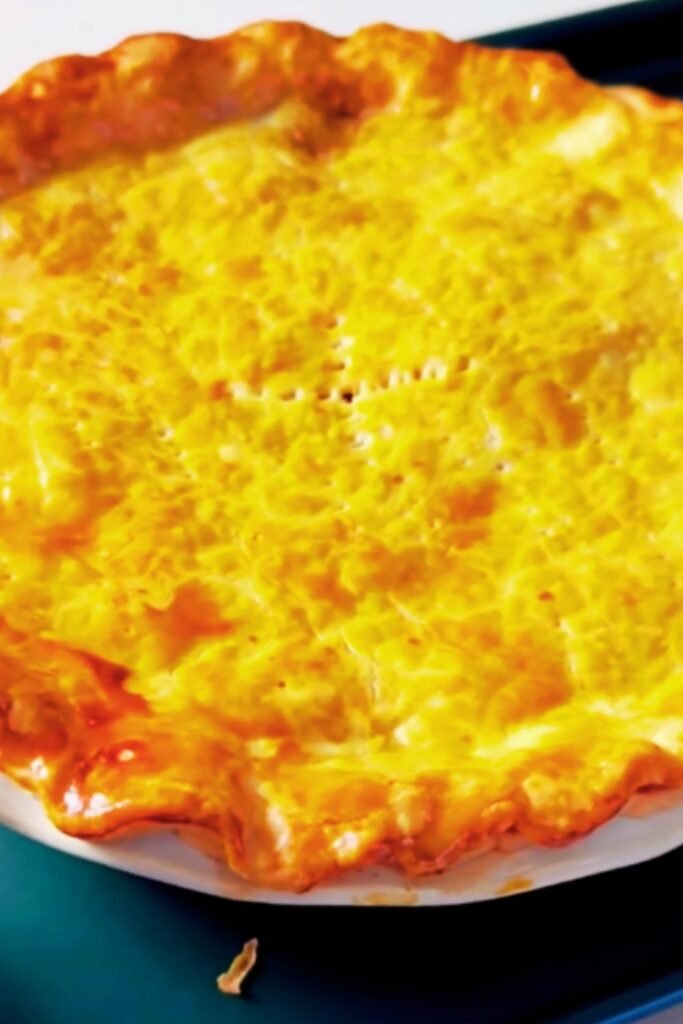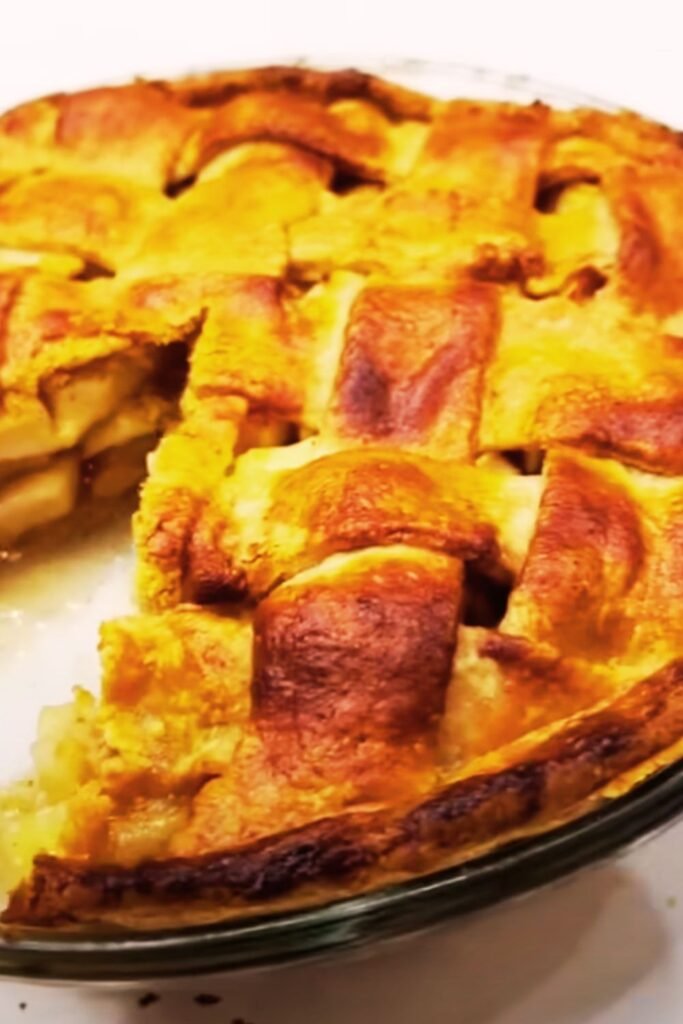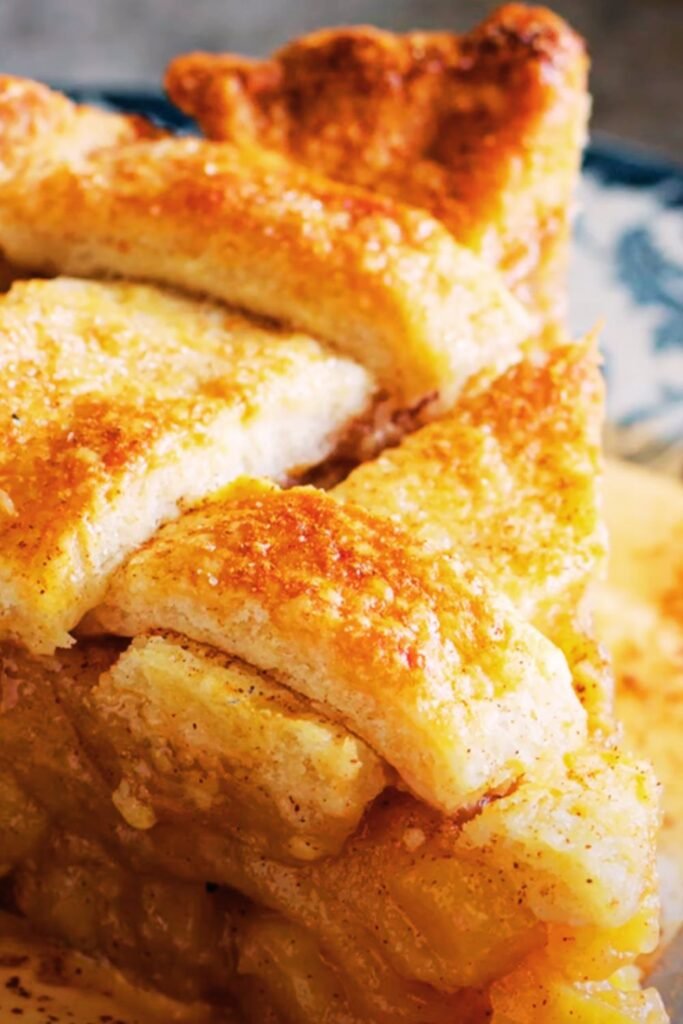As autumn leaves begin their colorful dance and the crisp air carries hints of cinnamon and spice, I find myself drawn to my kitchen with an irresistible urge to bake. While apple pie has long reigned supreme as the quintessential fall dessert, I’m here to shake things up and introduce you to some extraordinary apple creations that will make you question why we’ve been so devoted to that traditional lattice-topped beauty.
Don’t get me wrong – I have nothing against apple pie. It’s comforting, nostalgic, and undeniably delicious. But after years of experimenting in my kitchen and exploring global dessert traditions, I’ve discovered that the humble apple has so much more to offer than its classic pie presentation. From French-inspired tarte tatins to modern deconstructed creations, these alternative apple desserts bring excitement, sophistication, and surprising flavors to your fall baking repertoire.
Why It’s Time to Branch Out from Traditional Apple Pie
Traditional apple pie, while beloved, can sometimes feel predictable. The same crust, the same filling, the same presentation – it’s become almost too familiar. I’ve found that many home bakers stick to apple pie simply because it’s what they know, missing out on incredible opportunities to explore apple’s versatility.
My journey beyond apple pie began during a trip to France, where I encountered my first proper tarte tatin. The caramelized apples, the buttery pastry, the elegant upside-down presentation – it was a revelation. That experience opened my eyes to the vast world of apple desserts that exist beyond our American borders and traditional expectations.
Apple Varieties: The Foundation of Great Desserts
- Honeycrisp: Perfect for desserts requiring structure and sweetness
- Granny Smith: Ideal for tart contrasts and maintaining shape during baking
- Gala: Excellent for delicate desserts and gentle sweetness
- Braeburn: Wonderful for complex flavor profiles with spicy undertones
- Pink Lady: Great for both texture and visual appeal
Revolutionary Apple Desserts That Steal the Show
French Tarte Tatin: The Upside-Down Marvel
My personal favorite alternative to apple pie is the magnificent tarte tatin. This French masterpiece transforms simple ingredients into something truly spectacular through the magic of caramelization. Unlike apple pie, where the apples are enclosed in pastry, tarte tatin celebrates the fruit by making it the star of the show.
The process begins with creating a beautiful amber caramel directly in your tart pan. I arrange apple wedges in a stunning spiral pattern over this caramel, then cover everything with a sheet of buttery puff pastry. After baking, I flip the entire creation to reveal gorgeous caramelized apples glistening like jewels.
Essential Tarte Tatin Components:
- Caramel Base: Sugar cooked to perfect amber perfection
- Apple Arrangement: Precisely placed fruit creating visual drama
- Pastry Layer: Light, flaky puff pastry that doesn’t compete with the fruit
- Flipping Technique: The dramatic reveal that makes this dessert special

Apple Galette: Rustic French Elegance
The apple galette represents everything I love about French baking – it’s elegant yet approachable, rustic yet refined. Unlike the structured environment of a pie pan, a galette allows the pastry to flow naturally, creating beautiful, organic edges that embrace the apple filling.
I make my galette dough with a combination of butter and cream cheese, which creates an incredibly tender yet sturdy base. The filling is deliberately simple – thinly sliced apples tossed with just enough sugar, cinnamon, and a touch of lemon juice to enhance their natural flavors without overwhelming them.
German Apple Strudel: Layers of Heaven
Apple strudel showcases apples in an entirely different way than American desserts. The paper-thin phyllo dough creates dozens of delicate layers that shatter beautifully when cut, revealing tender spiced apples within. I’ve learned that the key to exceptional strudel lies in the apple preparation – they must be sliced thin enough to cook perfectly within the delicate pastry layers.
My strudel filling combines apples with breadcrumbs (which absorb excess moisture), raisins, walnuts, and a generous sprinkle of cinnamon. The breadcrumbs are a crucial element that many home bakers overlook – they prevent the pastry from becoming soggy while adding subtle texture.
Dutch Apple Crumble: Textural Paradise
The Dutch approach to apple desserts focuses heavily on textural contrast, and their apple crumble is a masterclass in achieving the perfect balance. Unlike American apple crisps, Dutch crumble features a much more substantial topping that’s almost like a sweet, buttery cookie dough scattered over tender apples.
I make my Dutch crumble topping with cold butter, flour, brown sugar, and oats, creating chunky pieces that bake into golden, crunchy clusters. The result is a dessert that offers multiple textures in every bite – soft, spiced apples beneath and crispy, sweet clusters on top.

Modern Apple Dessert Innovations
Deconstructed Apple Pie: Contemporary Artistry
The deconstructed apple pie trend has captured my imagination because it allows me to present familiar flavors in completely unexpected ways. Instead of traditional pastry, I might create cinnamon tuile cookies, apple caviar spheres, or even apple glass – techniques borrowed from molecular gastronomy that transform humble ingredients into conversation pieces.
My favorite deconstructed version features apple caviar (apple juice transformed into small spheres using sodium alginate), cinnamon soil (made from cookie crumbs and spices), and delicate pastry shards. Each element can be eaten separately or combined to recreate the apple pie experience in your mouth.
Apple Charlotte: Victorian Elegance Revisited
Apple charlotte represents one of the most elegant ways to present apples I’ve encountered. This Victorian-era dessert features apples molded within walls of buttered bread or ladyfingers, creating a stunning dome-shaped dessert that slices beautifully to reveal perfectly arranged fruit within.
I line my charlotte mold with overlapping slices of brioche that have been brushed with clarified butter and dusted with cinnamon sugar. The apple filling is cooked down until jammy, then packed into the bread-lined mold and baked until the bread forms a golden, crispy shell.
Flavor Profiles That Surpass Traditional Apple Pie
Spice Combinations Beyond Cinnamon
While cinnamon dominates traditional apple pie, I’ve discovered that apples pair beautifully with a much broader range of spices. Cardamom brings floral notes that complement apple’s sweetness perfectly. Star anise adds mysterious depth, while fresh ginger provides warming heat that awakens the palate.
Advanced Apple Spice Blends:
- Middle Eastern: Cardamom, rose water, pistachios
- Asian Inspired: Five-spice, ginger, sesame
- Nordic: Cardamom, almond, lingonberry
- Latin Fusion: Cinnamon, chili powder, lime zest
International Flavor Influences
My travels have introduced me to fascinating apple dessert traditions from around the world. In Morocco, I discovered apple pastries flavored with orange blossom water and studded with dates. Japanese apple desserts often incorporate matcha or black sesame, creating sophisticated flavor profiles that are both familiar and exotic.
These international influences have taught me that apples are incredibly adaptable, capable of supporting flavors that would seem impossible in traditional American preparations.

Detailed Recipe Comparisons: Traditional vs. Alternative
| Dessert Type | Prep Time | Baking Time | Difficulty Level | Unique Features | Best Apple Varieties |
|---|---|---|---|---|---|
| Traditional Apple Pie | 45 minutes | 50-60 minutes | Intermediate | Double crust, lattice options | Granny Smith, Honeycrisp |
| Tarte Tatin | 30 minutes | 35-40 minutes | Advanced | Caramelized base, upside-down | Gala, Pink Lady |
| Apple Galette | 25 minutes | 40-45 minutes | Beginner | Free-form, rustic edges | Any firm variety |
| Apple Strudel | 60 minutes | 25-30 minutes | Advanced | Paper-thin pastry layers | Golden Delicious, Braeburn |
| Dutch Crumble | 20 minutes | 45-50 minutes | Beginner | Chunky streusel topping | Honeycrisp, Jonagold |
| Apple Charlotte | 40 minutes | 45-50 minutes | Intermediate | Bread-lined mold, dome shape | Granny Smith, Northern Spy |
Seasonal Ingredient Pairings That Elevate Apple Desserts
Fall Harvest Combinations
Autumn provides an abundance of ingredients that pair magnificently with apples. I love incorporating pears for additional sweetness and subtle texture variation. Cranberries add tartness and beautiful color contrast, while walnuts and pecans provide satisfying crunch and rich, nutty flavors.
Pumpkin and apple combinations create complex flavor profiles that capture the essence of fall in ways that single-fruit desserts cannot. I often add a small amount of pumpkin puree to my apple fillings, which enhances moisture while adding subtle earthiness.
Unique Flavor Bridges
Cheese Pairings: Sharp cheddar with apple creates a classic combination, but I’ve found that mascarpone, goat cheese, and even blue cheese can create sophisticated dessert experiences.
Herb Infusions: Fresh thyme, rosemary, and sage might seem unusual in desserts, but they add complexity that transforms simple apple preparations into memorable experiences.
Citrus Enhancements: While lemon is traditional, I experiment with orange zest, lime juice, and even grapefruit to create unique acid balances that brighten apple flavors.
Professional Techniques for Home Bakers
Mastering Apple Preparation
The key to superior apple desserts lies in proper fruit preparation. I always peel apples uniformly to ensure even cooking, and I’ve learned to cut them into pieces that will maintain their shape throughout the baking process. For most desserts, I aim for slices that are about 1/4 inch thick – thin enough to cook through but substantial enough to provide texture.
Preventing oxidation is crucial for both flavor and appearance. I toss cut apples with lemon juice immediately, but I’ve also discovered that a small amount of ascorbic acid (vitamin C powder) works even better for longer preparations.
Temperature Control and Timing
Different apple desserts require different approaches to temperature and timing. Tarte tatin benefits from high initial heat to achieve proper caramelization, then moderate heat to cook the apples through. Strudel requires moderate, consistent heat to ensure the delicate pastry layers cook evenly without burning.
I’ve learned to use visual and aromatic cues rather than relying solely on timers. The smell of caramelizing sugar, the golden color of pastry, the way apples look when they’re perfectly tender – these indicators are more reliable than strict time guidelines.
Presentation Techniques That Wow
Plating and Garnishing
Presentation can transform even simple apple desserts into restaurant-quality experiences. I always warm my serving plates slightly, which prevents the dessert from cooling too quickly and helps maintain optimal texture. A light dusting of powdered sugar adds elegance, while a drizzle of high-quality caramel sauce creates professional polish.
Fresh herb garnishes – a small sprig of thyme or a few mint leaves – add color and aroma that enhance the overall experience. I also keep candied apple slices on hand for special occasions, as they add both visual drama and concentrated apple flavor.
Make-Ahead Strategies
Many alternative apple desserts actually improve when made ahead, unlike traditional apple pie which is best served fresh. Tarte tatin can be made in the morning and gently rewarmed before serving. Apple charlotte develops better structure when allowed to rest overnight in the refrigerator.
I’ve developed a system for preparing components in advance – making pastry doughs, preparing spice blends, even pre-cooking apple fillings – which allows me to assemble impressive desserts quickly when entertaining.
Nutritional Advantages of Alternative Preparations
Healthier Ingredient Profiles
Many alternative apple desserts offer better nutritional profiles than traditional apple pie. Galettes typically use less pastry relative to fruit, increasing the nutrient density. Crumbles can incorporate oats, nuts, and seeds, adding fiber, protein, and healthy fats.
I’ve experimented with reducing sugar in many recipes, finding that proper spicing and high-quality apples often provide sufficient sweetness. Alternative sweeteners like maple syrup, honey, and date paste can add complexity while potentially offering better nutritional profiles.
Portion Control Benefits
The elegant presentation of many alternative apple desserts naturally encourages smaller portion sizes. A beautifully plated slice of tarte tatin feels more satisfying than a large wedge of apple pie, despite containing fewer calories and less sugar.
Troubleshooting Common Issues
Pastry Problems and Solutions
Soggy Bottom Prevention: I always pre-bake tart shells partially, use proper thickening agents in fillings, and ensure my oven is fully preheated before baking.
Tough Pastry: Overworking dough is the most common cause. I handle pastry minimally and keep ingredients cold throughout the process.
Uneven Browning: Rotating desserts halfway through baking ensures even color development, and I use the middle rack position unless specific recipes require otherwise.
Apple-Specific Challenges
Mushy Apples: Choosing the right variety and not overcooking are crucial. I test doneness by gently pressing apple pieces – they should yield slightly but maintain their shape.
Insufficient Sweetness: Rather than adding more sugar, I enhance apple flavor through proper browning, complementary spices, and occasionally a small amount of apple brandy or vanilla extract.
Seasonal Menu Planning
Holiday Integration
These alternative apple desserts integrate beautifully into holiday menus. Tarte tatin makes an elegant Thanksgiving finale, while apple strudel adds European sophistication to Christmas celebrations. I often prepare multiple smaller desserts rather than one large traditional pie, which allows guests to sample different preparations.
Entertaining Strategies
For dinner parties, I choose desserts that can be partially prepared in advance and finished while clearing the main course. Apple galette is perfect for this approach – I can assemble it earlier in the day and bake it while we finish dinner, filling the house with incredible aromas that build anticipation.
Equipment Recommendations for Success
Essential Tools
Tart Pans: Invest in heavy-gauge, removable-bottom tart pans for professional results. I prefer 9-inch pans for most recipes, though I keep smaller individual sizes for special occasions.
Mandoline Slicer: Consistent apple slices are crucial for even cooking and professional appearance. A good mandoline saves time and improves results dramatically.
Kitchen Scale: Baking is chemistry, and accurate measurements ensure consistent results. I weigh ingredients whenever possible, especially for pastry preparations.
Specialized Equipment
For more advanced techniques, I recommend a pastry torch for finishing touches, silicone molds for modern presentations, and a food processor for perfect pastry doughs. These tools aren’t essential but they expand creative possibilities significantly.
Q&A Section
Q: Can I substitute different apple varieties in these recipes? A: Absolutely! However, consider the apple’s characteristics. Firm apples like Honeycrisp and Granny Smith hold their shape well, while softer varieties like McIntosh break down during cooking. I match apple varieties to the desired final texture of each dessert.
Q: How far in advance can I prepare these desserts? A: Most can be prepared 1-2 days ahead. Tarte tatin and apple charlotte actually improve overnight. Galettes and crumbles are best served within 24 hours. I recommend storing completed desserts covered at room temperature for the first day, then refrigerating if keeping longer.
Q: What’s the best way to reheat these desserts? A: I reheat most apple desserts in a 300°F oven for 10-15 minutes to restore crispness. Avoid microwaving, which makes pastries soggy. For individual portions, a toaster oven works perfectly.
Q: Can these recipes be made gluten-free? A: Many can be adapted successfully. I substitute almond flour or gluten-free flour blends in pastries, though textures will differ slightly. Crumbles adapt particularly well to gluten-free modifications using oats and nuts.
Q: How do I know when apples are perfectly cooked? A: Properly cooked apples should be tender when pierced with a fork but still hold their shape. They’ll have a slight translucent appearance and will smell intensely of apple and spices. Undercooked apples will be opaque and firm; overcooked apples will be mushy and broken down.
Q: What’s the secret to perfect caramel for tarte tatin? A: Patience and attention. I cook sugar slowly until it reaches a deep amber color – it should smell nutty and complex, not burnt. Adding butter at the right moment creates smooth, glossy caramel. If it seizes, I add a tablespoon of hot water and continue cooking.
Q: How can I prevent my pastry from shrinking during baking? A: Rest pastry dough in the refrigerator for at least 30 minutes before rolling, and chill again after shaping. Don’t stretch the dough when placing it in pans. Blind baking with proper weights also helps maintain shape.
Q: What serving suggestions work best with these desserts? A: I love serving these with high-quality vanilla ice cream, fresh whipped cream, or crème fraîche. For more sophisticated presentations, I might add a drizzle of salted caramel, a sprinkle of toasted nuts, or a small dollop of mascarpone.
These alternative apple desserts have revolutionized my fall baking, bringing excitement and sophistication to what was once a predictable season of apple pies. Each offers unique flavors, textures, and presentation opportunities that will surprise and delight your family and guests. While apple pie will always have its place in American dessert tradition, these international and modern alternatives prove that apples deserve a much more diverse and exciting treatment in our kitchens.
The beauty of branching out from traditional apple pie lies not just in the novel flavors and presentations, but in the renewed appreciation for the incredible versatility of this humble fruit. Whether you choose the elegant sophistication of tarte tatin, the rustic charm of galette, or the textural paradise of Dutch crumble, you’ll discover that apples offer endless possibilities for creative expression in your baking adventures.